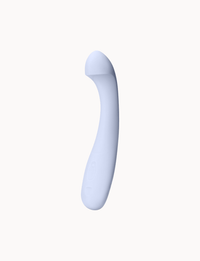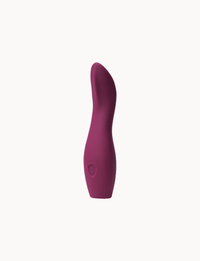Pregnancy can feel like it’s filled with all sorts of rules: no cured meats, no coffee, no undercooked eggs. The reward at the end is bringing a beautiful, healthy baby into the world, so we don’t mind switching to decaf and passing up on the sushi. Hopefully, all these strict rules stop postpartum, right? Enter: the six-week rule, recommending no penetrative sex for the first six weeks postpartum. After you’ve followed these seemingly arbitrary rules all the way through pregnancy, it’s only natural for a little skepticism to seep in. It’s fair to wonder: just how valid is the six week rule? Turns out, the six week rule has to do not only with physical changes that occur during birth, but is also deeply integrated into the culture of postpartum care in the United States.
What is the six-week rule?
The six-week rule essentially states that a birthing person should not have penetrative intercourse for the first six weeks postpartum, regardless of the delivery method. It exists for a couple of reasons. First, by six weeks, the first two phases of wound healing are often complete, so perineal tears or surgical scars can start to remodel by laying down collagen fibers, building tensile strength. Second, the uterus has likely completed the process of involution, shrinking from pregnancy size to pre-pregnancy size. And third, it’s the standard check up time for birthing folks in the United States. But is there really evidence to support this recommendation? Are the physical changes really coordinated with this six week timeline?
What’s happening in my body in the first six weeks?
Short answer- a whole lot! The body changes dramatically both during pregnancy and postpartum.
- Delivery method plays a role. If someone delivers vaginally, they may be recovering from perineal tearing or episiotomy (tearing or cutting of tissue between the opening to the vagina and anus, respectively). If someone delivers via Cesarean (C-section), they may have labored or attempted a vaginal delivery, on top of having a major abdominal surgery. Regardless of delivery method, pregnancy still progressively loads the pelvic floor muscles like a bowling ball in a hammock
- There’s a huge fluctuation in hormones, where estrogen, progesterone and cortisol production decline significantly, which can lead to changes in mood or libido
- The uterus undergoes involution, shrinking back down to pre-pregnancy size. The term ‘afterpains’ refers to the cramping feeling many birthing folks experience when the uterus contracts during this process. This often happens with breast/chestfeeding or pumping- releasing oxytocin, which helps the uterus to contract
- Lochia is produced during uterine involution. Lochia is a mixture of blood (and sometimes clots), mucus and uterine tissue, which appears as vaginal discharge after giving birth. Think of your uterus as a studio apartment for your infant for the last 40 weeks. Lochia is the deep cleaning after they move out!
- Balance and center of gravity shifts once again, causing postural changes as your body changes shape
- Chest/breast size may change if someone is nursing
And remember, it took 40 weeks of gradual changes to create a full-term pregnant body, so postpartum changes can feel really sudden, and that’s ok. After six weeks, there’s no lightswitch that makes you magically ready to have sex- physically, mentally or emotionally. Each person’s pregnancy, delivery and recovery will look a little different, which means their timeline for intimacy can vary greatly.
How valid is the six-week rule?
As is often the answer in medicine: it depends, because birth is a dynamic process. From a physical standpoint, there are some valid reasons why waiting to have penetrative intercourse would be wise. In the first two weeks postpartum, there’s an increased risk for infection in the genital tract and uterus (conditions such as puerperal sepsis or endometritis). Think of the uterus, vagina and vulva as open wounds immediately postpartum. The more bacteria you introduce, the more you roll the dice with getting an infection. Vaginal deliveries that involve perineal tearing or episiotomy need time to heal, even if they don't involve stitches. The healing timeline varies based on a lot of factors, like maternal nutrition or maternal age, but heavy friction on this area can not only increase discomfort but impair healing. In this case, waiting at least six weeks gives the tissue a head start to repair. Lochia persists for an average of 24-36 days and is a good indicator that the process of uterine involution is still happening, which again, means increased infection risk. But for many folks, this process stops well before the six week mark.
How does the six-week rule fit into our medical culture?
Beyond the physical reasons why the six week rule exists, consider how this rule fits into our medical culture in the United States. Ninety-eight percent of births occur in the hospital, and the standard of care typically is one six week visit postpartum in this setting, compared to your infant, who typically has three or four visits within the first month of life. The six week rule may be the standard recommendation because it gives providers the ability to examine your healing tissues before giving you the green light to have sex. Restarting contraception often occurs at this visit as well, and folks using contraception may be more likely to have sex. But in medicine, a one-size-fits-all approach can’t possibly take into account individual needs of birthing people. A single six week visit may be both insufficient and too late- in 2021, the American College of Obstetrics and Gynecology affirmed recommendations that postpartum care be an ongoing process, and that all birthing folks should have contact with a ‘maternal health provider’ in the first 3 weeks. One study showed that visit attendance was better at a 3 week postpartum visit than a 6 week postpartum visit. Perhaps to make more individualized recommendations on sex postpartum, we need to change the culture of postpartum care.
Should I wait to have sex?
If you have any lingering doubts, or had complications during your delivery, seeking clearance from a specialized medical professional is a good idea. Getting the ok from someone who knows their stuff can offer peace of mind that your tissues are healing appropriately. There doesn’t appear to be a difference from folks who had vaginal or Cesarean deliveries in resuming sexual intercourse. But if your delivery was uncomplicated, your lochia has stopped, and penetrative sex feels right for your body? There’s nothing in the research that suggests that 6 weeks is more sound than, say, 4 weeks. A couple of questions that might be helpful to ask yourself:
- Do I want to be having sex right now?
- Has my lochia stopped?
- Did I tear or have an episiotomy? How is the healing process going?
- Do I have a contraception plan? Do I have a plan if I get pregnant again?
The timeline for masturbation or oral sex may be different than penetrative sex. Performing oral sex can happen as soon as you feel comfortable, though receiving oral sex or self-stimulation near the opening of the vagina (introitus) should wait at least a few weeks, due to infection risk. If you’re a few weeks out but not ready to tackle penetrative sex, external vibrators can be a great place to start. Every birthing person’s relationship with intimacy will look a little different, but considering the above questions and physical state of your body can help to guide you in the right direction.




















































